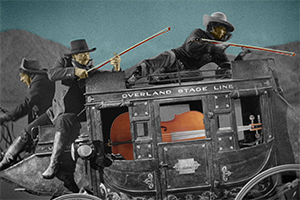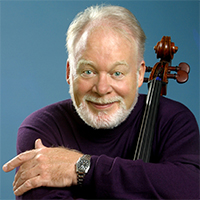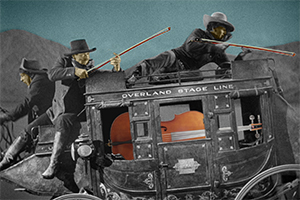
“The Illuminators” program organized and conducted by Joana Carneiro for her Berkeley Symphony highlighted musical associations and narratives, with varying success.
The Nigerian poet and novelist Ben Okri reminds us that “The fact of storytelling hints at a fundamental human unease.” In the case of Thursday’s program at Zellerbach Hall, it seemed that the greater the unease, the more effective the result. While “The Illuminators” were supposed to be the composers Andreia Pinto-Correia, Witold Lutosławski, and Sergei Rachmaninov, it was cellist Lynn Harrell’s facial expressions that shed the greatest interpretive light on the proceedings.
Like Music Director Carneiro, Pinto-Correia was born in Lisbon, Portugal. Both of them once resided in one of its colorful quarters, Alfama, which provided the title for the 10-minute commission she delivered to begin the program. In a preconcert interview with composer-in-residence Steven Stucky, Pinto-Correia described the neighborhood as a “labyrinth of old houses” with water constantly flowing underneath them with the past “layers of Roman, Visigoth, and Arab civilizations.” The two elements the composer wished to emphasize in her music were the water itself, portrayed in the strings, and a narrative of “Somebody entering a magical place” and eventually leaving it “like a mirage, a memory of something special.”
Harrell comported himself as if he were a child having a great time in a sandbox doing his own thing.
The impressions conjured in my mind by Alfamawere, unfortunately, far different. I heard background music for a benign horror film, an empty room with a creaking door, and faux homage to the “Spectralist” school of mathematical sound analysis. What water I could discern reminded me of shrill pipes conveying the effluvia of upstairs residences. A fundamental unease was there, at least. Mine was: Why doesn’t someone in this cold room turn on the heat?

Leaving Lisbon, ease and unease were pitted together in the most dramatic contrast between soloist and orchestra written since Wilhelm Stenhammar’s Piano Concerto No. 2 of 1907. Lutosławski’s 1970 Cello Concerto pits the soloist against the brass section, beginning with a full four minutes of unaccompanied noodling on the part of the soloist. The extraordinary opening begins with 17 nonchalant D’s, one per second. Various flights of filigree alternate with the repeated notes until 35 more in a row recur.
Lutosławski advised the dedicatee of the work (Mstislav Rostropovich) to interpret this long introduction as interrupted boredom, but Harrell comported himself as if he were a child having a great time in a sandbox doing his own thing, eliciting numerous bouts of laughter from the audience. Yet his expressions changed when confronted by furious attacks from the brass, with the rest of the orchestra taking sides with one protagonist or the other over the next 20 minutes. A climactically frantic “chase” scene leads to the audible extinction of the cello near the work’s conclusion. But the cello returns with a short coda that the composer described as a “‘triumphant’ ending … beyond the event which has just been accomplished.”
In my book, this means the brassy bad guys kill the cello but his memory inspires others, and/ or he ascends to heaven. In any case, the way Harrell played — and acted — like a champ throughout led to a well-earned standing ovation by nearly all present. Harrell rewarded his audience with a beautifully rendered encore, an arrangement of Chopin’s posthumous C-sharp-minor nocturne.
The Symphony players accomplished one of their best performances, in terms of technique.
Much of the “story” in Rachmaninov’s Symphonic Dances, played after intermission, can be experienced by treating it, as Thomas May does in his program notes, as “a guarded retrospective survey of his past career [where] Rachmaninoff laces the score with self-quotations from a number of earlier works.” Also to be taken in consideration is May’s description of Rachmaninov’s “permanent homesickness” for Russia.
Carneiro’s “illumination” of the familiar score was, for the most part, excellent. She did a fine job of handling the many transitions that, if taken too abruptly, expose the work’s flawed structure. She was most effective in the second movement’s ”Valse Triste”-like atmosphere. In the first movement, the varied handling of accents was laudatory, but the “longing for Russia” of the lyrical theme did not sound intense enough for me. The longueurs of the middle section of the finale seemed a trifle slow. And sadly, as always, the spiky climaxes from the brass disappeared into the Zellerbach Hall rafters, no matter how well Carneiro built to them.
The Symphony players accomplished one of their best performances, in terms of technique. To acknowledge but one of the many fine soloists, David Henderson’s saxophone shone in its delicious Rachmaninov solo turn. In short, the story of Carneiro’s stewardship of this fine symphony seems to be heading toward a happy ”ever-after.”

